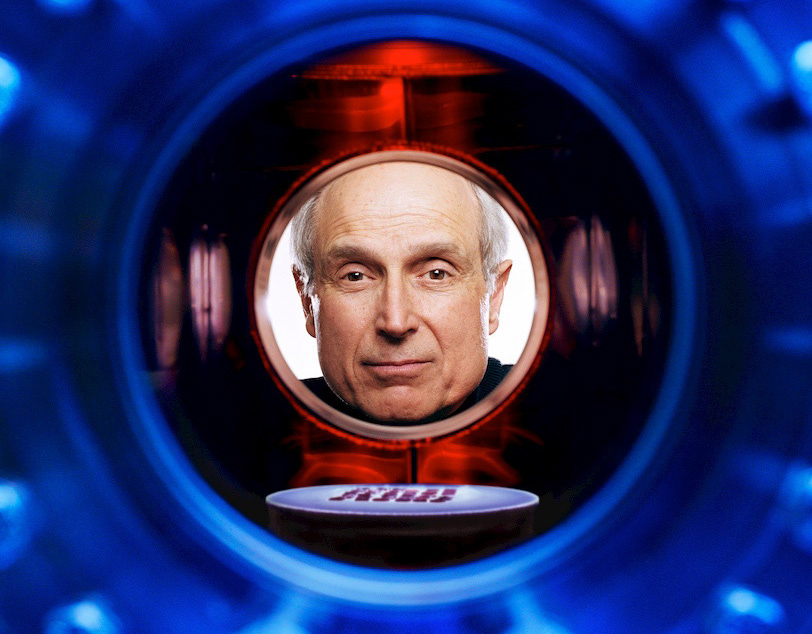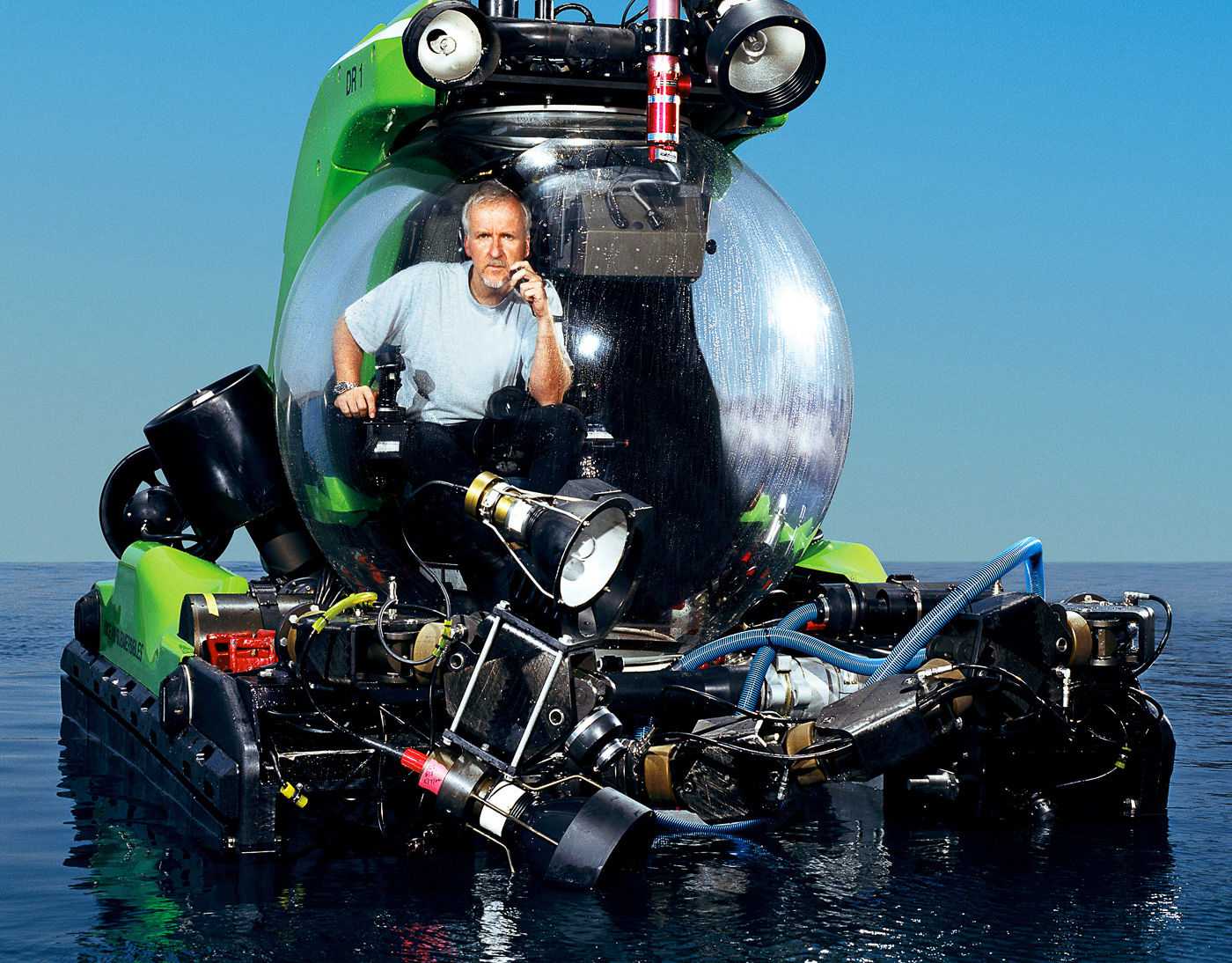The Race Back to the Moon
Astropreneurs are counting down for a return to Apollo country. The first small step: a satellite atlas of the lunar surface. The next giant leap: ice mining, helium farming, and a launchpad to the solar system.
By Tom McNichol [WIRED MAGAZINE]
For David Gump, the journey of 239,000 miles begins from a squat office building tucked behind the multiplex 14 in Fairfax, Virginia. Here, at the headquarters of LunaCorp, the commercial space company he cofounded in 1989, Gump has been keeping a lunatic dream alive through boom and bust: to boldly go where no private venture has gone before - to send the first business model to the moon and return it safely without losing his shirt. "Most space projects have way too many zeros on the end," says Gump, a slender, bespectacled man whose unassuming appearance belies his outsize plans. "You've got to be able to get something that's more in the $20 million range."
Luckily, LunaCorp has a $20 million mission nearly set to go: a lunar orbiter called SuperSat, scheduled to launch in late 2004. And it's not the only one. TransOrbital, a San Diego company, plans to send a private lunar orbiter into space this October. The outfit's Trailblazer satellite will hitch a ride aboard a low-cost Russian rocket, make its way into orbit, and provide high-definition video and photos of the moon's surface. The mission will end with the delivery of a lunar time capsule containing personal messages and memorabilia.
More than 30 years after the last human walked on its surface, the moon has reappeared on the exploration radar screen. In July, the European Space Agency plans to launch the Smart-1 orbiter, the first European lunar probe. Its goal: to flight-test a new solar electric propulsion technology and map the moon using X-ray and infrared detection. In January, Japan will get into the act with its Lunar-A probe, which will send two instrument-laden penetrators plunging into the moon's surface. A follow-up mission in 2005, called Selene, will put two satellites into lunar orbit to study the origin and evolution of the moon. India and China are in an unofficial but unmistakable race to put a man on the moon, perhaps by the end of this decade.
Russia, which sent the first person into space, is offering both rockets and launch facilities to private space firms. TransOrbital has a $20 million contract with Kosmotras, a Ukrainian space firm authorized to use decommissioned Soviet ICBMs. It's a measure of how much the world has changed since the days of Apollo that a private American space company is relying on an SS-18 missile once pointed at America.
NASA doesn't have a moon mission planned, but that may change. The 2002 National Research Council Solar System Exploration Decadal Study, which will set NASA's exploration agenda for the next 10 years, says "the moon provides a baseline for much of planetary science." It gave a high priority to sending a return mission to the Aitken Basin, at the moon's south pole. "We're coming out of the wilderness years of lunar exploration,"says David Lawrence, a scientist at Los Alamos National Laboratory's Space and Atmospheric Sciences Group.
The lunar ventures all intend to make some detailed photographs that will help develop precise maps of the moon and, by extension, get the public excited about it again. Like TransOrbital's Trailblazer, LunaCorp's SuperSat is basically a flying video camera, a broadband probe that will beam back digital video of the lunar surface over a 25-Mbps communications channel. To get the payload into space, Gump is considering a variety of launch options, including the European Space Agency's Ariane 5 rocket. With the communications satellite market in a recession, the cost of sending a small payload aboard Ariane 5 has dipped below $10 million.
Another plan would have the space shuttle deliver SuperSat, unassembled, to the International Space Station, where a payload specialist would put it together - a proposal NASA had shown interest in before the loss of Columbia. The shuttle's near future may seem muddy, but Gump believes NASA will come around. "We know now that the shuttle's failure rate is 1 in 55, which is higher than anyone thought," he says. "But the failure rate of an expendable rocket is about 1 in 20, so the shuttle is still less risky." Once SuperSat gets off the ground, the plan is to have it lock into a lunar orbit and map the surface with an HDTV camera and panospheric video. The images will be beamed to science centers, where visitors will be able to turn the camera in any direction to see the view from the spacecraft.
With so much of space left to explore, why bother going back to the moon? For one, to answer a crucial question: Is there water? The 1998 to '99 flight of NASA's Lunar Prospector detected large concentrations of hydrogen at the moon's poles, a strong clue that there may be considerable deposits of ice. If so, the discovery would revolutionize the economics of lunar exploration overnight. Because water can be broken down into hydrogen and oxygen, it provides both fuel and breathable air; a local supply would save the high cost (up to $20,000 per kilogram) of shipping water on a spacecraft. Suddenly, the moon would change from a barren place to plant flags and leave footprints into a potential space colony - and a jumping-off point for exploration of Mars and beyond.
The initial moon race was about getting there first. The second race is about turning the moon into a piece of real estate that will sustain future missions - and this time, private enterprise has a place at the starting blocks. "We spent $26 billion to get to the moon, and what did we gain besides beating the Russians?" says Alan Binder, founder and director of the Lunar Research Institute in Tucson. "Teflon and Tang don't cut it. Once you have humans on the moon that are not government-approved astronauts, then the whole thing will take off."
In the early '80s, David Gump edited a pair of aerospace newsletters, Space Business News and Military Space. After publishing dozens of stories about the impending commercialization of the space shuttle, he started to believe his own hype. He wrote a manifesto for private exploration, Space Enterprise: Beyond NASA, and formed LunaCorp with a group of fellow enthusiasts. But over the next decade, the commercial space market never left the launchpad. No one was willing to pour millions into such a highly speculative area, and NASA remained a reluctant, slow-moving business partner.
To survive, LunaCorp took on space marketing projects, acting as a broker between NASA, the Russian Space Agency, and private enterprise. In May 2001, it arranged the first TV ad shot aboard the International Space Station: a Father's Day spot for RadioShack. It also coordinated having an astronaut aboard the ISS throw the ceremonial first pitch of the 2002 World Series, and even had a hand in Lance Bass' celebrated effort to get into space. LunaCorp shuffled some RadioShack dough to pay for Bass' medical screening, but the 'N Sync star wasn't able to raise the $20 million needed to get into space.
Meanwhile, LunaCorp was testing out its satellite communications skills with the Robotics Institute at Carnegie Mellon University. As part of the Lunar Rover Initiative to confirm the presence of ice at the moon's poles, the institute conducted field trials of robot prototypes in the Arctic and in Chile's Atacama Desert. Gump and company provided the satellite stream for the latter mission. "A research program like ours simply can't pay for a live videostream from the Chilean desert," says William Whittaker, director of the Robotics Institute's Field Robotics Center. "But LunaCorp is able to do it through connections in the space industry and by calling in favors."
Through it all, Gump has paid a substantial price to keep his company going. He took out a second mortgage on his house, and then a third, sending his credit rating into a death spiral. The Apollo program's primary challenge was technology. Today, getting a high-thrust rocket motor to perform a successful translunar injection burn is easy compared with raising funds. To convince companies like Nike and Pepsi to part with a few million dollars, LunaCorp is packaging the first commercial lunar mission as an event. RadioShack has kicked in several million dollars, and Gump is betting that other large companies will follow suit. He's also working on TV deals, Web site fees, and sales to science centers. "David's very persistent," says Buzz Aldrin, the second man on the moon and a LunaCorp consultant. "He's been at this a long time, but that's what you have to do. You can never tell when a commercial space venture will suddenly become viable."
The road to viability for any aspiring commercial launch winds through a bureaucratic maze. The US government doesn't issue moon permits as such, but a private lunar probe has to go through a lengthy regulatory process. Soon after TransOrbital announced plans for a lunar orbiter dubbed 2001 Trailblazer, it found the mission smothered in red tape. "People told me it would be no big deal, that you could get approval in about 30 days," says Dennis Laurie, president of TransOrbital. "It wound up taking two years."
On its 90-day trek, Trailblazer plans to beam back dramatic hi-res shots of earthrise. (While Apollo 8 captured the most famous image of the big blue marble in 1968, TransOrbital expects a much sharper picture from its cameras.) This meant securing FCC approval for Trailblazer's use of radio frequency bandwidths. And the cameras required a remote sensing permit from the National Oceanographic and Atmospheric Administration. Furthermore, Earth images taken from space are governed by an international treaty requiring any commercial entity to make its photographs available to any government whose land appears in the image.
And that wasn't all. NOAA had to ensure TransOrbital complied with the Outer Space Treaty of 1967, which holds countries liable for contamination of the lunar environment resulting from commercial activities. TransOrbital had to show that its mission wouldn't leave any hazardous debris on the moon or in orbit, and that it wouldn't disturb the Apollo and Russian Lunakhod landing sites. Also, TransOrbital had to agree to provide the US government access to any data deemed necessary for national security or foreign policy purposes. Before NOAA gave its final approval, it consulted with the State Department and the Department of Defense to evaluate the mission's possible impact on national security.
Since Trailblazer will launch from Kazakhstan, every component falls under the International Traffic in Armaments Regulations, a set of byzantine rules designed to prevent US military technology from falling into foreign hands. Nearly all spacecraft technologies are considered to have a possible military use, and TransOrbital had to show that it was meticulously following security procedures. (LunaCorp has avoided enlisting the help of the Russians, in part because of the strict regulations of technology transfer. But any private American firm radioing home images from space needs NOAA and FCC sign-off.)
The laborious process was finally completed in August, when the State Department issued a letter granting approval. "If you wanted to transfer a nuclear weapon to the Russians instead of a satellite, you'd essentially have to go through the same procedure," says Laurie. "We're the first company to get this licensing for a commercial mission to the moon, and we intend to take advantage of that."
Trailblazer is slotted for an October-December launch window, set to take off from the Baikonur Cosmodrome aboard a Russian Dnepr rocket. The Dnepr is a converted SS-18 ICBM codenamed Satan by NATO commanders during the Cold War. Under the Start treaty, the Russians are required to destroy several hundred old ICBMs. By removing the warhead and using the rocket as a launch vehicle, the Russians satisfy the treaty and make a bundle.
Trailblazer is scheduled to reach the moon in four days, taking pictures of the receding Earth and approaching lunar surface along the way. Once the probe nears the moon, it will go into an elliptical, 18-hour polar orbit for 60 to 90 days, flying as close as 50 kilometers above the surface and recording hi-def still and motion images with 1-meter resolution. "We should be able to see some hardware from past Apollo and Russian landings," Laurie says. "We may pick up the outlines of a flag." The spacecraft will also take stereographic images of the surface, combining two shots from different perspectives, and a lunar atlas for sale to the public will be produced as a result.
The mission will end with a bang. The probe will speed toward the surface, taking barnstorming video until it slams into the lunar dust. The probe will be destroyed on impact, except for its titanium time capsule. People can, for $16.95 to $59.95, write a message that will be carried on an archive disc. Sending an actual item will cost $2,500 per gram. Laurie says he's already taken reservations for business cards, lockets, rings, artwork, and even cremated remains. "People are telling us they want to look up at the moon and say, 'There's Grandma,'" he explains.
Laurie is counting on revenue from sales of the lunar atlas and of the high-definition images and video for use in feature films, advertising, videogames, and educational materials. He says the company is "pretty much on schedule" to raise the necessary funds. "I have a lot of respect for what David Gump's done," says Laurie. "But I want him to finish second in this race. We intend to be the first commercial venture to the moon. That can be done only once."
When the three-man crew of Apollo 17 returned to Earth in December 1972, the Apollo program officially came to a close. After more than a decade of obsession, NASA abandoned the moon.
But space scientists continued to see the importance of understanding Earth's closest neighbor and pressed for further missions. The Lunar Research Institute's Alan Binder has come as close as anyone to launching a successful commercial lunar probe. He was a key player in some of NASA's choice ventures - including his role as a principal investigator on the 1976 Viking Mars lander, which made the first unmanned touchdowns on the red planet. But he grew to believe that the agency's big-budget "flag and footprints" projects were a dead end. In 1989, he founded a nonprofit company, Lunar Exploration, to define, promote, and raise money for a commercial lunar probe. Binder didn't get NASA involved at first, feeling that talk was about the only cheap thing at the space agency. "The biggest obstacle to commercialization is NASA itself," he says. "I said, 'Look, I'll find the investors, there won't be any risk to your budget,' and they still didn't care. Basically, NASA thinks it owns space. And anyone playing in its backyard isn't welcome."
NASA did finally partner with Binder - by adopting his independent mission. In 1995, NASA chose Binder's probe, the Lunar Prospector, to be the third round in the agency's Discovery program of "better, faster, cheaper" lunar and planetary missions - a $63 million endeavor. Lunar Prospector was launched in January 1998 and went on to conduct a 19-month orbital mapping mission. At one point, the spacecraft's path lowered to within 6 miles of the surface, allowing the probe to obtain data at much higher resolutions. Then a startling finding came from the neutron spectrometer, which indicated significant amounts of hydrogen at the poles. If that hydrogen were locked up in ice, it would mean the moon has water - lots of it. The deposits suggest there could be 200 million tons of ice crystals less than 2 feet beneath the surface.
Prospector was unable to confirm the existence of water, despite a heroic last effort. Originally, the mission was supposed to end with the spacecraft careening into the moon when it ran out of fuel. After the hydrogen findings, operators decided to use the crash more creatively. Prospector was sent into a 1,100-mph suicide plunge. Scientists made a spectral analysis of the impact plume but found no evidence of water. "We won't know if there's water on the moon until we go digging," says Binder. "But I'd be willing to bet there is."
A water discovery may be what it takes to re-ignite NASA's interest. Officials say that due to funding shortfalls for the International Space Station, no manned lunar mission is planned for the foreseeable future. Privately, some NASA scientists say the moon gets shortchanged because of politics within the agency. "Most of the missions that get funded have the involvement of the Jet Propulsion Lab," says one NASA insider. "And JPL is not interested in the moon at all. They prefer missions that feature remote sensing technology that they've already developed." The best hope is that NASA's Discovery program will adopt a lunar South Pole project.
The way to sell lunar exploration to NASA and private enterprise alike is to show that the moon can deliver a tangible payoff. The presence of water would establish the moon as a safe harbor for further exploration and a test bed for new technologies. It would also likely spur a wave of investment from the likes of Lockheed and Boeing. "The reason to go back isn't science," says Los Alamos' Lawrence. "It's to learn how to make use of non-Earth resources. Science can go along for the ride."
Whether or not it has water, the moon definitely contains other natural resources that could prove beneficial to earthlings. Among them: helium 3, a nonpolluting fusion fuel source. Only several hundred pounds of the isotope of common helium, discovered in 1939, are thought to exist on Earth. Scientists estimate there are about 1 million tons of helium 3 on the moon - enough to satisfy Earth's energy needs for thousands of years.
Another way to supply Earth with energy, according to David Criswell, a physicist at the University of Houston and director of the Institute for Space Systems Operations, is to harvest solar power from the moon. He proposes a system consisting of 20 to 40 lunar bases containing a series of solar cells. The power would be sent over buried electric wires to microwave generators that would convert the solar electricity to microwaves, which would be beamed back to Earth.
Criswell estimates that harnessing just 1 percent of the moon's solar energy could replace fossil fuel power plants on Earth. "The first thing you'd want to have is a government-sponsored demonstration that the system works," he says. "It's a bit like the interstate highway system. Once the government funded it, all sorts of businesses opened up along side it. But you couldn't expect the businesses to build the highways themselves."
If significant progress is made in tapping some of those natural resources, the public could become captivated by the moon all over again. LunaCorp is counting on it. At company headquarters, Gump has developed prototypes of what he calls telepresence portals, designed to immerse users in the sights, sounds, and motions experienced by a lunar rover. A small rubber-tired rover with a video camera strapped to its back rumbles across the mock lunar landscape constructed on the ground floor of its office building. Mission Control it's not. But it's good practice.
One day - when the $130 million cost of actually getting a rover to the moon comes down - LunaCorp will beam this immersive experience to ticket-holding visitors at science centers, planetariums, and theme parks. Users will sit in a hydraulic chair that rocks, rolls, and dips in tandem with a rover steered by joystick over the rocky lunar surface.
There's no shortage of ideas about how to generate revenue streams once a rudimentary lunar infrastructure has been established. Helium 3 mining operations. Solar energy farms. Orbiting lunar hotels. The problem for companies like LunaCorp and TransOrbital is staying alive until those ideas become more than just lunatic dreams. The second race to the moon awaits its Sputnik.










